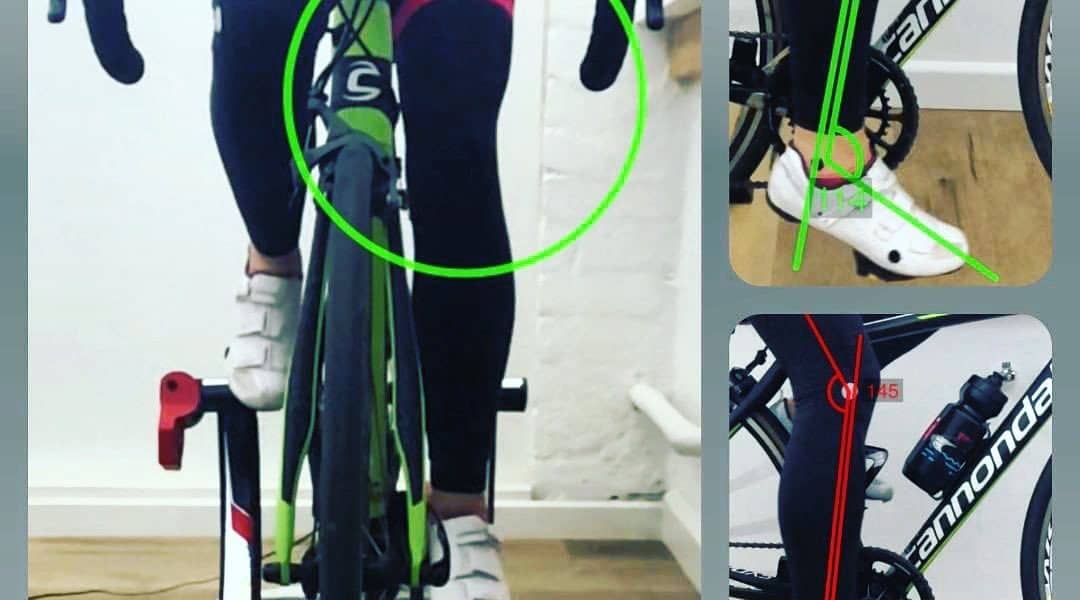Knee pain is one of the most common injuries associated with cycling. This is largely due to the repetitive nature of cycling and the compressive forces associated with a poorly fitted bike fit.
A poor bike fit or even a change in equipment (shoes, cleats, saddle, etc.) can increase the amount of compressive force the knee cap places onto the knee joint. This will result in higher contact forces between the kneecap and knee joint causing pain and restriction in function.
While the body can tolerate these compressive forces in small doses, the repetitive nature of cycling can lead to the onset of knee pain. Especially if coupled with a spike of increased duration or an increase in intensity, or both, during training and racing.
A poorly fitted bike is one reason cyclist can experience knee pain. Another reason is due to poor cycling technique.
Common errors in cycling technique include a poor heel position at the bottom of the pedal stroke and a knee valgus pattern as a cyclist pushes down on the pedal from the top of the pedal stroke. Both will increase the amount of compressive force the knee cap places onto the knee joint, with a valgus knee pattern putting more compressive force on the outside of the knee. This will result in higher contact forces between the kneecap and knee joint causing pain and restriction in function.
As mentionted previously, the body is great at tolerating and adapting to these compressive forces but a repetitive amount as seen in cycling can lead to the onset of knee pain.
The only way to help reduce the chance of knee pain, and to improve your cycling efficiency and run off the bike, is to make sure you are correctly fitted to your bike.
A poorly fitted bike can be both inefficient and non-aerodynamic, while also causing pain within the lower back, upper back, shoulders, neck, arms and knees.
An ideal bike fit includes understanding the individual athlete and their specific racing requirements. The key aspects of any bike fit are aerodynamics, comfort and power (or speed).
Knowing the athletes history and racing requirements will determine the approach needed for their bike fit. A bike fit for a sprint distance event can focus on aerodynamics and power while sacrificing some comfort. While a bike setup for an Ironman or road racing would prioritise comfort and aerodynamics with less focus on power. If you find yourself moving out the saddle or sitting up frequently then you are losing the advantage of being aerodynamic.
Mistakes can be made setting up a bike that can cause poor performance and increase the risk of an injury. Handlebar position on a bike is important for the athletes aerodynamics, though if fitted poorly can put more stress onto the shoulders and back and can result in pain with a loss of comfort, aerodynamics and efficiency.
Seat position is an important part of any bike fit. If the saddle is too low, you’re not using the full potential of your leg lever, resulting in a less efficient pedal stroke. If the saddle is too high, this will cause the pelvis to move around more on the saddle resulting in strain on the lower back and again a less efficient pedal stroke.
Remember you are unique as an athlete and so is your bike set-up. You need to find the right balance of aerodynamics, power and comfort for each of your race day requirements. Once you get your ideal bike fit, it is important to spend as much time as possible to adapt to the position and become efficient on your bike.
If you would like to book a bike fitting, simply book online with our resident Physiotherapist, Steve Stringer of Nspire Physiotherapy.

